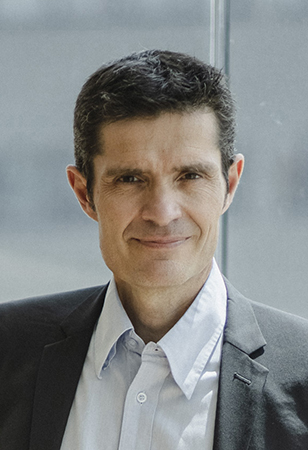
Sébastien Dauvé, PResident of Nanoelec & CEO of CEA-Leti (c) Jérôme Deduystche
On July 1st 2021, Sébastien Dauvé became the new CEA-Leti CEO. He takes over from Emmanuel Sabonnadière, who was named head of the silicon carbide program at Soitec. Sébastien Dauvé is now president of IRT Nanoelec.
Nanoelec recently renewed its contract with the French government. What do you believe are Nanoelec’s strenghs as an institute that drives competitiveness in the electronics industry?
The microelectronics industry is, more than ever, a key for European and French sovereignty. Nanoelec is an invaluable asset in such a context. The institute gathers internationally renowned industrialists who are willing to work together as one, and, as a result, strengthen their research and industrialization capabilities. Nanoelec’s industrial entities work at different levels of the value chain, share common roadmaps and employ scholars who strive for scientific excellence. For example, IRT Nanoelec has developed 3D technologies that are key for the future of electronics, for devices that both address scaling and heterogeneous integration road maps. Nanoelec benefits from robust technological know-how, top-notch equipment builders for chip-to-wafer or wafer-to-wafer assembly, architecture specialists and component manufacturers adressing a diversity of markets. Furthermore, thanks to our SystemLab initiative, we will be able to combine our assets and generate new converging markets for our various industrial players.
GIEC scientists issued a new warning with regards to climate change. What can the electronics industry do to preserve the environment?
At CEA-Leti and at Nanoelec, it is no longer possible to ignore the issue. It’s a major concern for industrials and research teams. We must strive for a more sustainable industry and for inspiring “frugal” electronics. This term encompasses numerous areas of innovation that, I hope, will contribute to reduce our greenhouse emissions and our dependence on rare earth minerals. I also believe that this could generate a competitive edge. In addition, as a body backed by the government, IRT Nanoelec’s actions are transitioning to become part of an overall sustainability strategy.
Do you think that Nanoelec’s multiple-partner model is complementary to the standard CEA-Leti model based on bilateral collaboration? Why?
When I previously worked as head of the Systems department at CEA-Leti, I got a sense of how important Nanoelec is. I think both models complement each other very well. CEA-Leti oversees numerous industrial projects in a bilateral mode by agreeing on a specific roadmap with an industrial partner. Nanoelec addresses more all-encompassing topics and works with a group of industry players sharing common interests. Its goal is to prepare the ground for the emergence of new technologies that are useful and relevant for the general public and industry professionals.
Take, for example, the Nanoelec/Pulse program. It has been able to lay a strong foundation for emerging topics regarding digital trust at CEA-Leti. I also know how much the Easytech program, which provides support for SMEs, is appreciated and well-known by both companies on the receiving end, and local communities for whom economic development in their region is so important. The institute’s responsiveness and flexibility make it easy for industry players to be increasingly proactive in the electronics industry.




